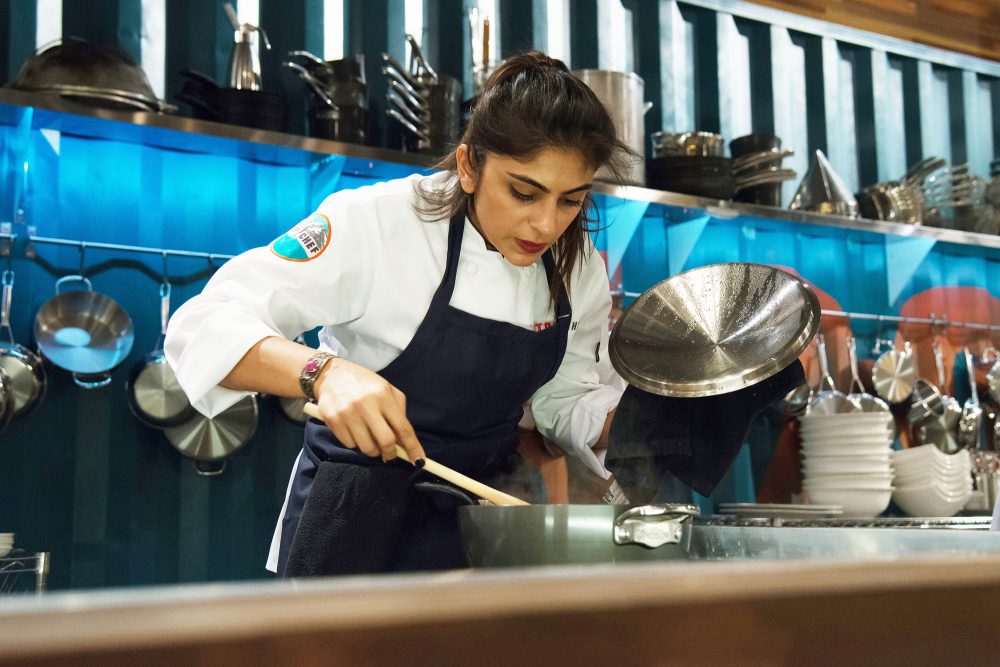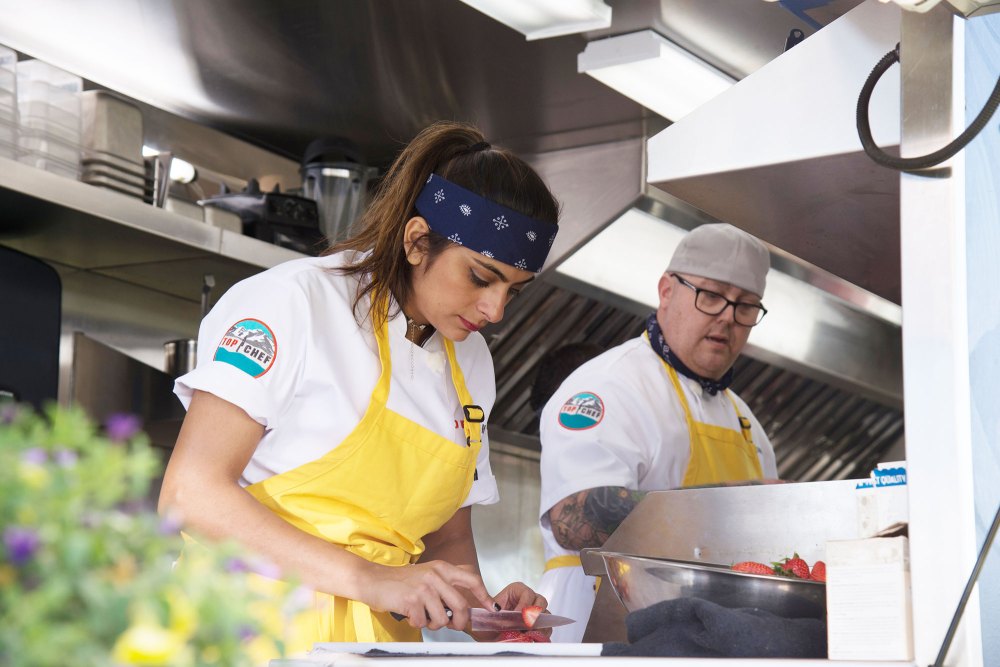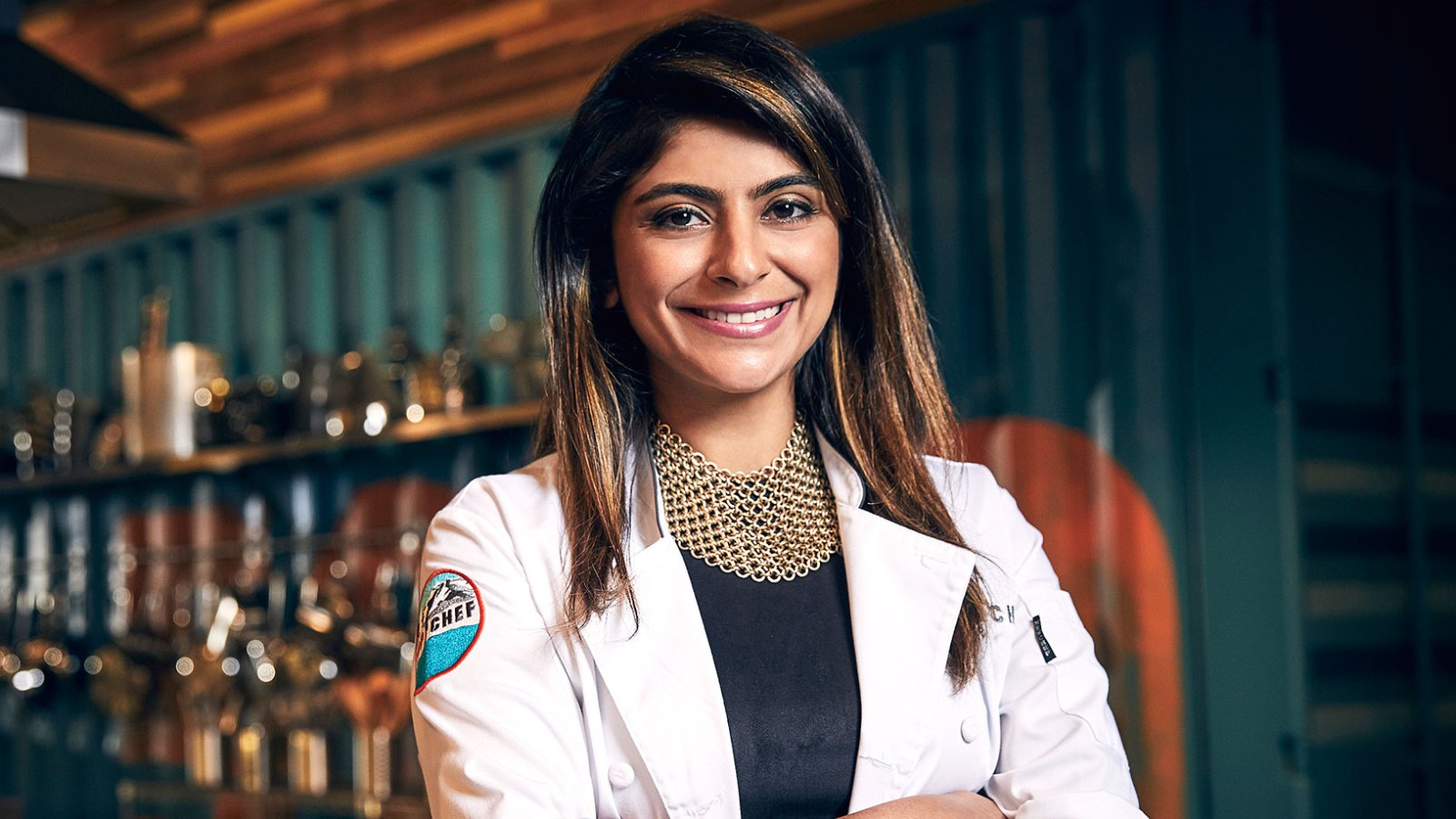The world reacted with shock and sadness when Top Chef’s Fatima Ali revealed on Tuesday, October 9 that she had been diagnosed with terminal cancer and given a year to live. Many were also left with the question: What is Ewing’s sarcoma, the rare form of cancer the 29-year-old chef has, and who is most at risk? Us spoke to Dr. Will Eward, MD, DVM, Orthopedic Oncologist at the Duke Cancer Institute to find out more.

“Ewing’s sarcoma is a very, very rare tumor, a very rare cancer, usually of bone,” Eward tells Us. “It is a type of the family of cancer called sarcoma. There are over 100 of these cancers. Ewing’s sarcoma is just one of these.” Emphasizing its low rate of occurrence, the oncologist explains that if you took all of the types of sarcoma and added them together, “combined, they are less than 1 percent of all cancer. So it’s uncommon to get a sarcoma, period.”
Still, Ali’s sarcoma is one of the most common cancers of childhood, says Eward — who has not treated Ali. “Because, of course, kids don’t usually get cancer. And as Fatima is unfortunately showing, we call it a cancer of childhood, but it actually is a cancer of childhood and early adulthood.”
The NYC chef and writer had been diagnosed with Ewing’s sarcoma, also referred to as Ewing sarcoma, in 2017. Her prognosis seemed good after she underwent four rounds of chemotherapy that fall, as well as surgery in January 2018. But as the season 15 fan favorite wrote in her essay on Bon Appetit’s Healthyish, her cancer returned worse than before: “The cancer cells my doctors believed had vanished are back with a vengeance in my left hip and femur bone. My oncologist has told me that I have a year to live, with or without the new chemotherapy regimen.” She has since received an outpouring of support and love from celebs including Padma Lakshmi as well as donations through the GoFundMe page fellow season 15 contestant Adrienne Cheatham started for her.
Unfortunately, the survival rate of Ewing’s sarcoma is low: approximately 65 percent, says the Duke MD. And even that number comes with a caveat; it applies to “people who present with what we call localized disease — in layman’s terms, people who present with just one spot of this cancer in their skeleton.” In that case, the course of treatment is typically chemotherapy as well as “something that controls the primary tumor,” says Eward. “For most sarcomas the way you have to control the primary tumor is to cut it out of the body.” It’s an intense course of treatment, “so those patients pay a price but they can be saved,” he notes. “The problem is that once it spreads to your lungs [or elsewhere]… later, then it’s essentially not curable.”
As for the cause of Ewing’s, that’s unclear too. The Mayo Clinic notes that there is no known link to environmental or lifestyle factors. Explains Eward, “We’ve never found anything you can eat, drink, smoke or be exposed to that causes you to get it… we plain and simple do not know what makes some people get this.”
The one bright side is that, unlike many other sarcomas, there are symptoms. “Ewing’s sarcoma is unusual in that it does give you these symptoms of fatigue and of malaise, of just not feeling well,” says Eward.
One of the big tell-tale signs is bone pain. “If you have bone pain and you haven’t had an injury, and it doesn’t go away, see your doctor and get it worked up. Get some X-rays, find out what’s going on,” says Eward. “Is it likely that you’re going to have Ewing’s Sarcoma? No. But a lot of the people we see with Ewing’s sarcoma, it’s a delayed diagnosis. They’ve been told, ‘Oh you just have a sprain or you just have a bruise.’” But as soon as you are presenting symptoms, there is no grace period: “There’s no precancerous [stage]. There’s no screening test,” he says. “Once you have it, you have it. Once you have symptoms, you have it.”
When the cancer comes back after treatment, which says Eward, is “unfortunately, too common,” the chances are that the cancer cells never fully left. “It’s a little hard to wrap your head around, but what most of us think is happening is that, in a case like Fatima’s, it probably had already spread but it wasn’t detectable,” he says.
Eward says that, at least theoretically, there is still some hope. “I really don’t think oncologists should be in the business of telling people how long they have to live. Because you don’t really know until you see how the cancer responds to the treatment you hit it with,” says the doctor. “So I think for Fatima, from what little I know about her case, she could go on some different, what’s called rescue chemotherapy and she could have a really good response.”

The decision comes down to quality of life versus quantity. “Someone who stops having treatment [after the cancer returns] could have a fairly normal quality of life but for a short period of time, because without treatment the disease would quickly take over her body,” he says. “So it really is a case of, Do you want to have more time, or do you want to maximize the quality of the time you have left?”
And while the medical community is studying some new drugs as treatment options, no remedy is far along at this point. Instead, explains Eward, some oncologists “are trying to find creative new ways to understand these sarcomas better because they are so rare.”
As a DVM, or Doctor of Veterinary Medicine, as well as an MD, Eward is among a growing number of oncologists turning to canines for answers. “Whereas sarcomas are incredibly rare in people, they are really, really common in dogs. We hope that by studying these in dogs, that will give us the insight to figure out what causes these things and what are some new treatments to use to try to cure them.”
“Because curing 65 percent,” he declares, “that’s just not acceptable.”
With reporting by Marc Lupo




